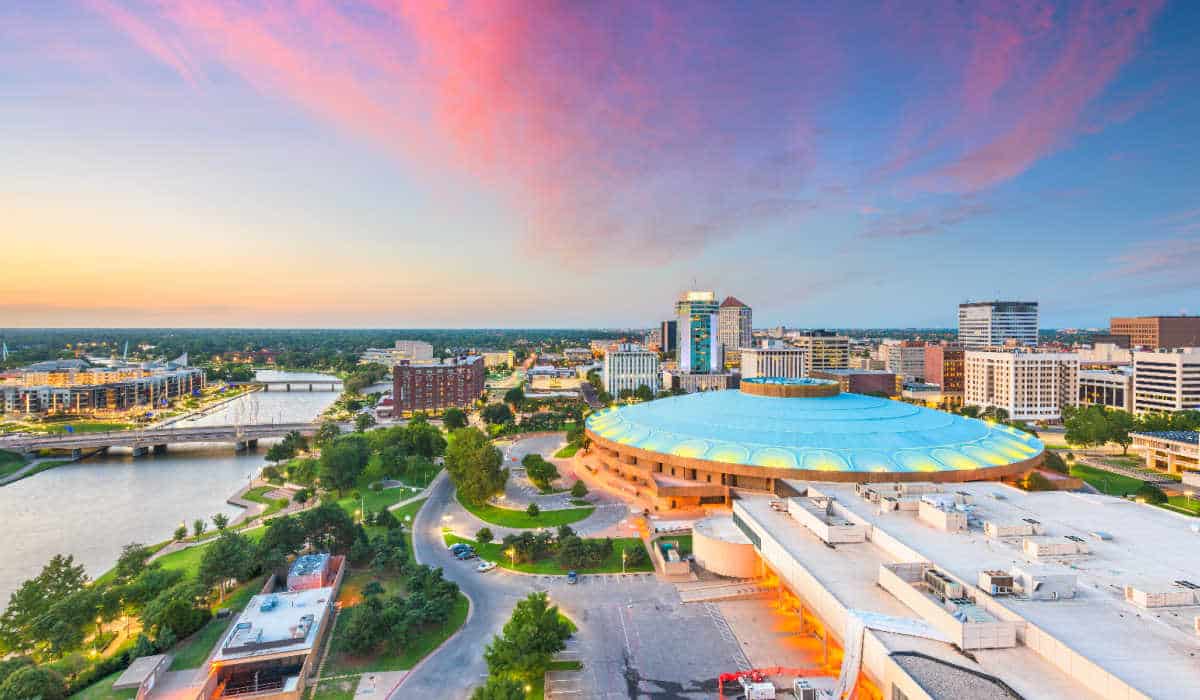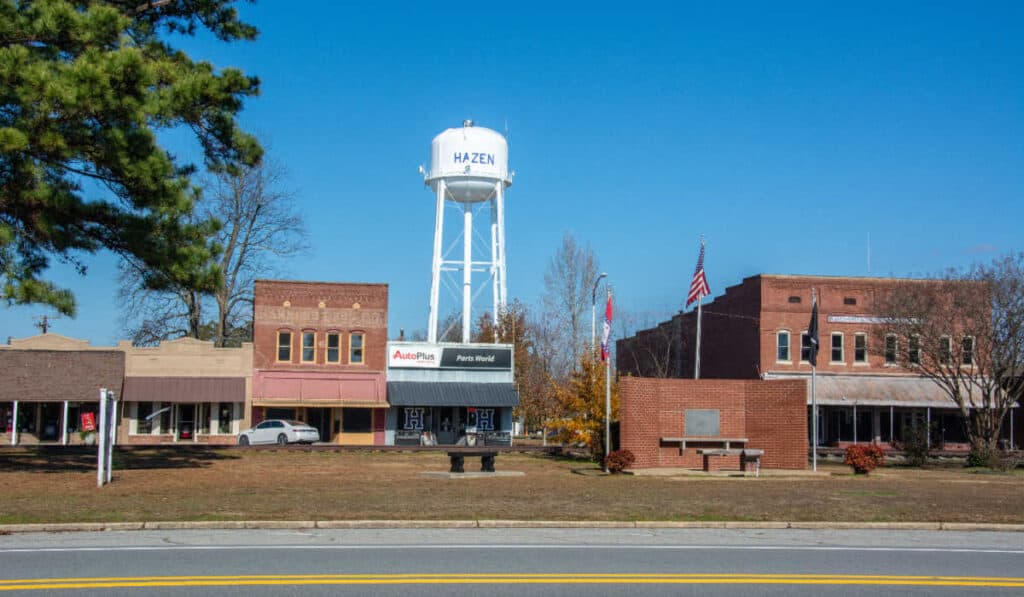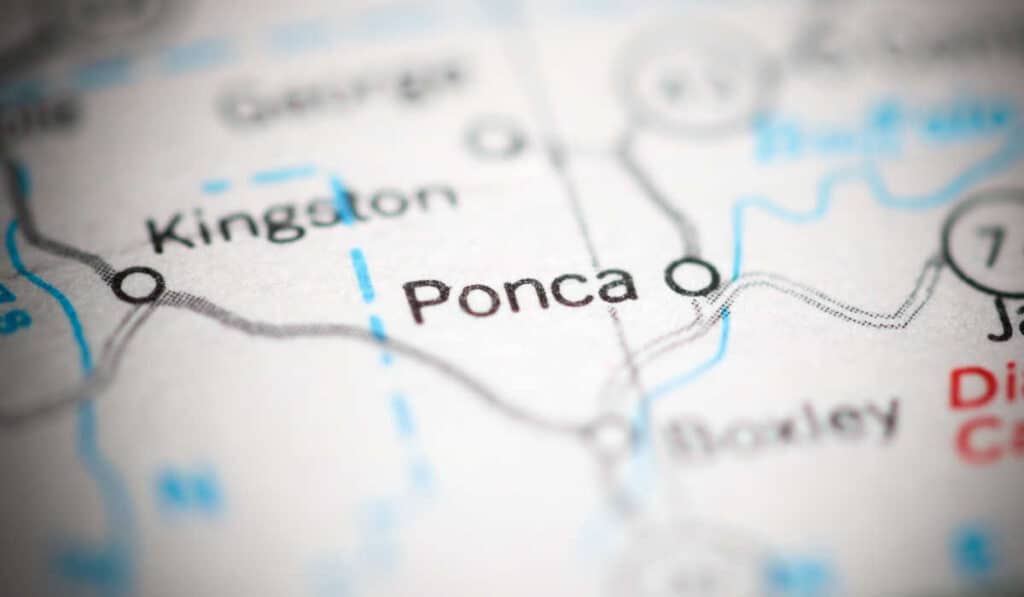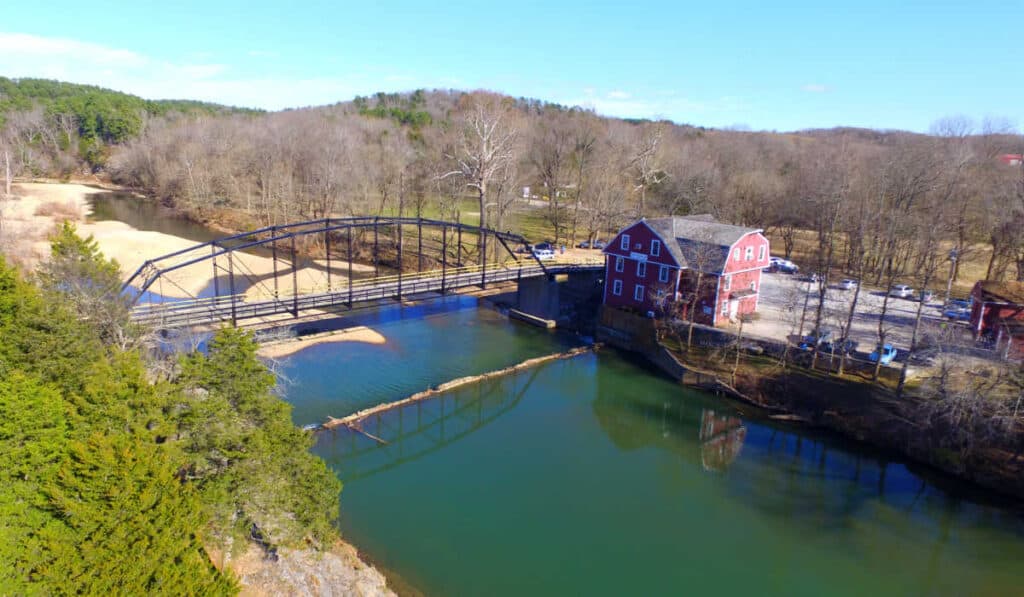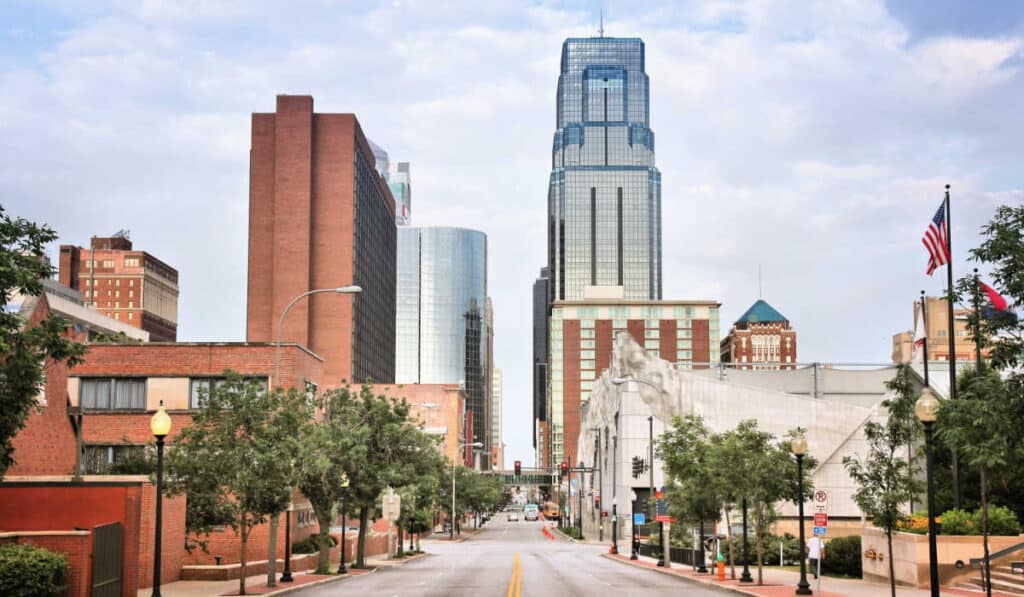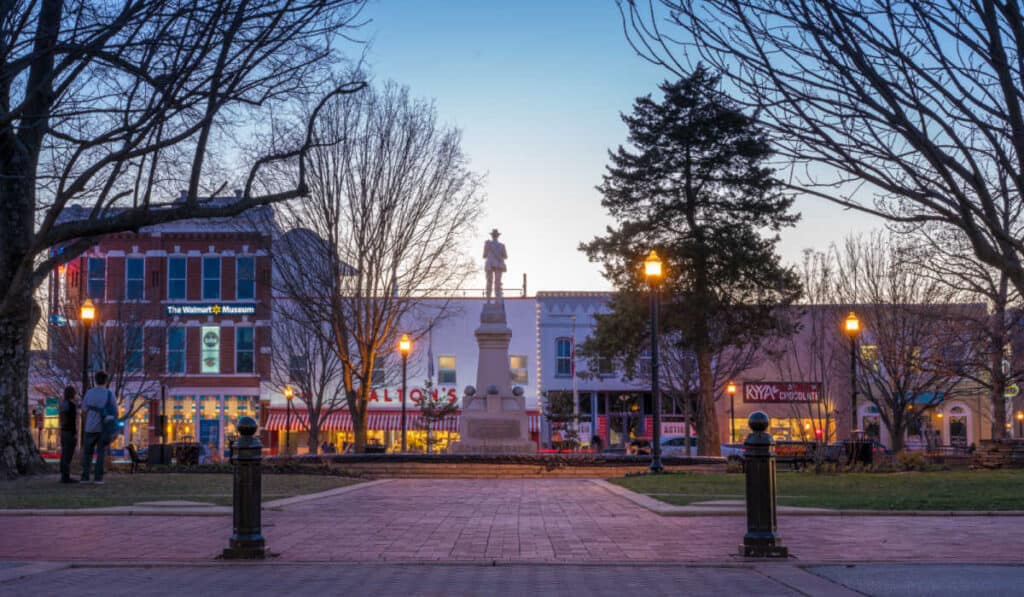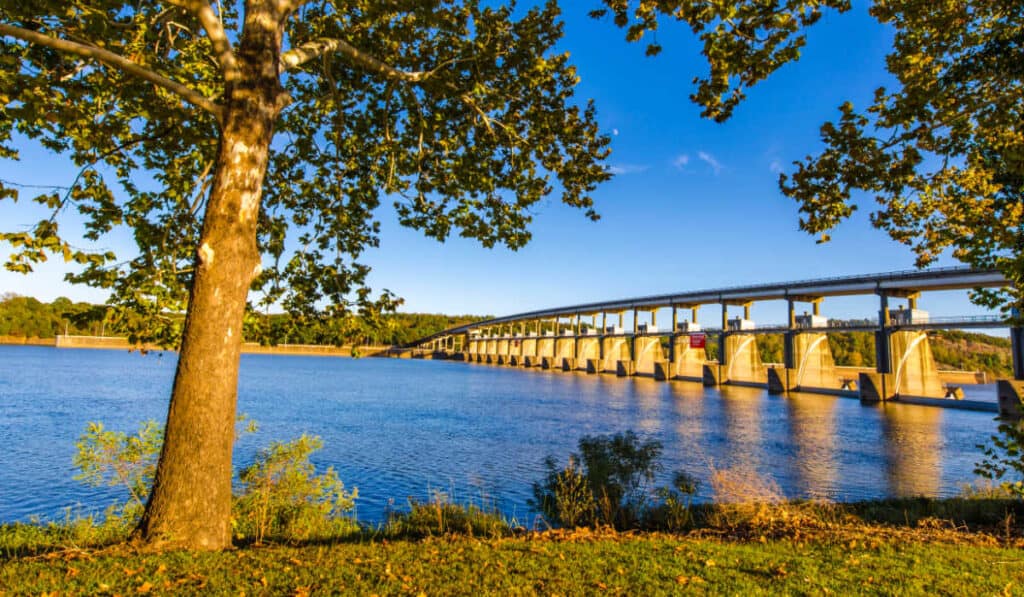Wichita, Kansas, situated on the banks of the Arkansas River, is the largest city in the state and has a rich history that dates back to its origins as a cowtown. Known for its role in the cattle-driving industry, Wichita maintains its connection to this past through the living Cowtown Museum. This unique attraction offers visitors a glimpse of life during the city’s early days, highlighting the culture of the Wild West.
As the city grew over the years, it has also earned the nickname “Air Capital of the World.” This is due to its prominence in the aviation industry, with several major aircraft manufacturers and suppliers calling Wichita home. Furthermore, the presence of three universities, including Wichita State University, contributes to the city’s reputation for higher education.
With a blend of historical charm and modern progress, Wichita continues to be a thriving hub in the heart of Kansas. Its diverse attractions and rich heritage make it a fascinating destination for residents and visitors alike.
History
Early Settlers and Wichita Indians
Wichita, Kansas is located in Sedgwick County along the Arkansas River. The city’s history dates back to at least 11,000 years ago, when the confluence of the Arkansas and Little Arkansas Rivers served as a trading center and meeting place for nomadic hunting people. In the 1860s, the Wichita Indians inhabited the area, and a trading post was established on the site of their village. The Atchison, Topeka, and Santa Fe Railway played a significant role in the spread of agricultural settlement in the region during the mid-1800s.
Chisholm Trail and Cattle Drives
Wichita began as a trading post on the Chisholm Trail in the 1860s and was incorporated as a city in 1870. The Chisholm Trail was established by Jesse Chisholm as a route for cattle drives traveling north from Texas to Kansas railroads. As a result, Wichita became a major destination for cattle drives and earned the nickname “Cowtown.” Wyatt Earp notably served as a police officer in Wichita for around a year before heading to Dodge City. In the late 1870s, the cattle trade moved further west due to the construction of rail lines, leading to a brief economic downturn for the city.
Aircraft Manufacturing and Wichita’s Growth
By 1880, Wichita rebounded with a growing economy in agriculture and manufacturing. The city’s first Board of Trade was opened, and the Wichita Eagle newspaper began publication. Wichita’s growth continued through the 20th century, and it became renowned as an aviation hub. Notably, it is often referred to as the “Air Capital of the World” due to its thriving aircraft manufacturing industry.
The city’s rich history, from its origins with the Wichita Indians and the Chisholm Trail to its modern-day prominence in the aviation industry, makes Wichita, Kansas a unique and dynamic city in the United States.
Economy
Aviation Industry
Wichita, Kansas, is often referred to as the “Air Capital of the World” due to its significant role in the aviation industry. Historically, Wichita has been a crucial hub for aircraft manufacturing, with companies such as Stearman Aircraft, Cessna, Learjet, Boeing, and Spirit AeroSystems establishing operations in the city. Wichita remains a leader in general aviation and is home to McConnell Air Force Base, which contributes to the region’s strong aviation presence.
The Wichita Dwight D. Eisenhower National Airport serves as a primary transportation hub for the region and provides essential services to the local aviation industry.
Agriculture and Cattle Trade
In addition to aviation, Wichita’s economy is deeply rooted in agriculture and the cattle trade. Initially, founded as a trading post on the Chisholm Trail in the 1860s, Wichita played a significant role in the Midwest’s cattle trade. Today, agriculture remains an essential part of the city’s economic makeup, with crops like wheat, corn, and soybeans prevalent in the region. Livestock, especially cattle, continues to contribute to the overall economy.
Entrepreneurship and Business
Wichita has a rich history of entrepreneurship and business growth. Companies such as Koch Industries and Coleman were founded and remain headquartered in the city. Wichita’s business-friendly environment and central location in the Midwest have attracted various other industries, such as manufacturing, healthcare, and renewable energy.
The city has made efforts to encourage entrepreneurship and cultivate a supportive climate for small businesses, as demonstrated by the presence of several local breweries, food trucks, and other emerging ventures.
Education
Wichita, Kansas is home to several reputable institutions of higher learning. Wichita State University (WSU) is a noteworthy university located in the city. With a growing population approaching 700,000, Wichita serves as the commercial, financial, medical, cultural, and entertainment hub for the state. This provides a thriving environment for education and professional development.
Among the academic institutions in Wichita, Friends University offers programs in a variety of disciplines. This private, Christian liberal arts university is known for maintaining smaller class sizes, which allows for closer interaction between students and faculty. Some of the popular programs include Business, Fine Arts, and Science.
Another university in Wichita is Newman University. A Catholic institution founded in 1933, it offers a range of undergraduate, graduate, and professional programs, focusing on creating well-rounded individuals who can contribute to society. Newman University is recognized for its commitment to providing a strong foundation in liberal arts education.
In summary, Wichita serves as a hub for education in Kansas, offering diverse opportunities for higher learning at institutions like Wichita State University, Friends University, and Newman University. These universities provide an array of programs, fostering personal growth and professional development for their students.
Population and Demographics
Wichita, Kansas is the largest city in the state and is located in Sedgwick County. As of 2023, the city has a population of 392,878, making it the 51st largest city in the United States. The population has a diverse range of age groups, with a median age of 33.9 years.
The gender composition of Wichita is fairly balanced, with 49.3% of the population being male and 50.7% being female. In terms of race and ethnicity, the city is predominantly White at 60%, followed by African Americans at 9%. Other ethnicities present in the city include Asians at 5% and Hispanics at 18%.
Wichita, Kansas has a rich history, with archaeological evidence indicating human habitation in the area as early as 3000 BC. In 1541, a Spanish expedition led by explorer Francisco Vázquez de Coronado discovered the Quivira people living in the region. Since then, the city has grown and evolved, becoming a diverse and thriving community.
Geography and Climate
Wichita, Kansas, is located in south-central Kansas on the Arkansas River. It’s the largest city in Sedgwick County and the most populous city in the state. The region also includes the Little Arkansas River and the nearby city of Derby. Known by its airport code “ICT,” Wichita boasts a diverse landscape and a range of climates.
The climate in Wichita is characterized by distinct seasons, with hot and dry summers and relatively mild winters. In the summer months, temperatures often reach into the 90s, with July being the warmest month, boasting an average temperature of 33.1°C (91.6°F). Winters are more temperate, with temperatures ranging from the mid-20s to the low 40s, and January being the coldest month, offering an average temperature of -5.7°C (21.7°F).
Wichita experiences precipitation throughout the year, including rain, hail, and snow. The city receives an average of 27 inches of rainfall annually, spread across 78.7 days. Snowfall, meanwhile, is less common, accumulating to an average of 322.58mm (12.7 inches) per year. Spring and summer thunderstorms in the area can be severe, bringing heavy rain, hail, strong winds, and even tornadoes. The Wichita-Valley Center Flood Control Project provides protection against floods, ensuring the safety of the city’s residents.
The geography and climate of Wichita, Kansas, contribute to the city’s unique identity. Its location along the Arkansas and Little Arkansas Rivers and its neighboring cities like Derby add value to the region. The varying weather conditions throughout the year offer a diverse array of experiences, making it an interesting place to visit and live.
Arts and Culture
Wichita, Kansas is known for its vibrant arts and culture scene. The city offers a diverse range of museums, attractions, and events that reflect its rich history and cultural heritage.
Museums and Attractions
- Old Cowtown Museum: This living history museum transports visitors back in time to experience life in the late 1800s with over 50 historic buildings, costumed interpreters, and hands-on activities.
- Museum of World Treasures: A one-of-a-kind museum showcasing a broad collection of artifacts from around the world, ranging from ancient civilizations to modern history.
- Mid-America All-Indian Center: A museum honoring the Native American heritage of the region, providing cultural education and supporting events showcasing Native art, music, and dance.
- Sedgwick County Zoo: The 7th largest zoo in the United States, featuring a diverse range of animals and acclaimed exhibits, such as the third-largest elephant exhibit in the country.
Festivals and Events
- Final Friday Gallery Crawl: A monthly event where artists and galleries in downtown Wichita open their doors for an evening of art appreciation and community engagement.
- Wichita River Festival: An annual celebration of the city’s artistic and cultural achievements, including live music, performances, and various events along the Arkansas River.
- Wichita Black Arts Festival: A yearly event that celebrates Wichita’s African American heritage with a display of art, music, dance, and literature from the local Black community.
- Tallgrass Film Festival: An internationally recognized film festival showcasing independent films from around the world, giving filmmakers an opportunity to share their work with audiences in the heart of the Midwest.
Points of Interest
Wichita, Kansas is home to a variety of unique attractions and points of interest for visitors and residents alike. The city is situated along the banks of the Arkansas River, providing picturesque views and opportunities for recreational activities.
The Sedgwick County Zoo is a must-visit destination in Wichita, being the seventh-largest zoo in the United States and the state’s most-visited outdoor attraction. The zoo is renowned for its diverse collection of animals and naturalistic exhibits, including the third-largest elephant exhibit in the country.
Nature enthusiasts will appreciate the abundance of parks and green spaces throughout the city. Wichita boasts over nine disc golf courses for those seeking a fun outdoor activity. Among the beautiful parks, the Botanica stands out as a stunning botanical garden that showcases a diverse range of plant species in a serene atmosphere.
Wichita is also known for its significant and powerful steel sculpture, the Keeper of the Plains. Standing at 44 feet tall, this breathtaking statue is located where the Big and Little Arkansas rivers converge, marking it as sacred land. The sculpture is especially mesmerizing at night, illuminating the area with a spectacular display of lights.
For those traveling by air, the Wichita Dwight D. Eisenhower National Airport serves as the main gateway into the city. Conveniently located, the airport offers modern facilities and efficient services for passengers arriving and departing from Wichita.
In conclusion, Wichita, Kansas, offers a diverse array of points of interest, ranging from its renowned Sedgwick County Zoo to the breathtaking Keeper of the Plains sculpture. With its beautiful parks and botanical gardens, as well as the convenient Dwight D. Eisenhower National Airport, there is something for everyone in this thriving Midwestern city.
Food and Restaurants
Wichita, Kansas, has a diverse culinary scene that boasts a unique blend of Midwestern, Latin, and international flavors. From delicious fast-food joints and bakeries to upscale dining experiences, you’ll find a range of excellent options to satisfy your cravings.
One of the historically iconic food joints is Pizza Hut, which started in Wichita back in 1958. Today, it has grown into a global chain popular for its flavorful pizzas and innovative toppings. Another notable fast-food chain that began in this city is White Castle, established in 1921, known for introducing the first-ever hamburger slider.
For a taste of a local favorite, make sure to try bierocks, a German dish made of bread dough filled with various ingredients, including beef, cabbage, and onions. You can find an authentic version of this dish served at restaurants like Prost.
Mentholatum is another famous brand that originates from Wichita. Although not a food item, this multi-purpose ointment has been around since 1889 and is still widely used worldwide.
For dessert, you can indulge in some delicious pies made from centuries-old recipes at places such as Peace, Love & Pie, Bagatelle Bakery, and The Kitchen. Wichita’s proximity to various farms ensures the freshest seasonal ingredients for some mouth-watering sweet treats.
In addition to traditional cuisine and fast food, Wichita offers diverse dining experiences across different cuisines. For example:
- Sabor Latin Bar & Grill: A popular Latin and Central American restaurant known for its mussels with chorizo, steak, and mojitos.
- Scotch & Sirloin: A well-regarded upscale steakhouse experience in the city.
- Kobe Steak House of Japan: Serving delicious Japanese dishes, including teppanyaki and sushi options.
- Piatto Neapolitan Pizzeria: A must-visit for all pizza lovers who enjoy true Neapolitan-style wood-fired pizza.
For fans of frozen treats, you cannot miss Freddy’s Frozen Custard & Steakburgers – a Wichita-originated fast-food chain best known for its delicious custard desserts and juicy steakburgers.
In conclusion, Wichita offers an eclectic mix of food choices that cater to diverse tastes. From its iconic fast-food start-ups and traditional culinary delights to global cuisines, the city offers a truly satisfying gastronomic experience for anyone exploring this vibrant destination.
Notable People and Events
Influential Citizens
Wichita, Kansas, has been home to several influential citizens who have made significant contributions to various industries. Some notable figures from Wichita include:
- Clyde Cessna: He was an aviation pioneer and the founder of Cessna Aircraft Company, an aircraft manufacturing company based in Wichita.
- Walter Beech: He was an aviation innovator and co-founder of the Beech Aircraft Company, which later became Beechcraft and eventually part of Textron Aviation.
- Lloyd Stearman: He was an aircraft designer and aviation entrepreneur who founded Stearman Aircraft Corporation, which was later acquired by Boeing.
Together, these individuals played a crucial role in establishing Wichita as the “Air Capital of the World.” The city is also home to several aircraft manufacturers such as Airbus and Textron Aviation, further solidifying its significance in the aviation industry.
Some other notable Wichita natives include Joe Walsh, a singer and guitarist for The Eagles, and Kirstie Alley, who starred in the popular television show “Cheers.”
Historical Events
Wichita has a rich history marked by several memorable events:
- In the early 1920s, Clyde Cessna, Walter Beech, and Lloyd Stearman created Swallow Airplane Company, the foundation for the city’s reputation as the “Air Capital of the World.”
- Wichita became an important center for aircraft production during World War II, with companies like Boeing and Cessna manufacturing military aircraft to aid the war effort.
- On April 14, 1935, Wichita and the surrounding areas experienced Black Sunday, a massive dust storm that affected the entire Midwest and led to increased focus on soil conservation efforts.
- Wichita, located in Sedgwick County, has been part of several boundary changes throughout the history of Kansas. The city was in the Otoe Indian reservation in the 1860s and later included in Butler County before becoming part of Sedgwick County in 1870.
Wichita’s economy has grown beyond aviation, with industries such as healthcare and entertainment playing an essential role. The INTRUST Bank Arena hosts various concerts and events, attracting numerous visitors to the city. Colonel James Jabara Airport, a popular general aviation airport, also highlights Wichita’s continued dedication to the aviation industry.

